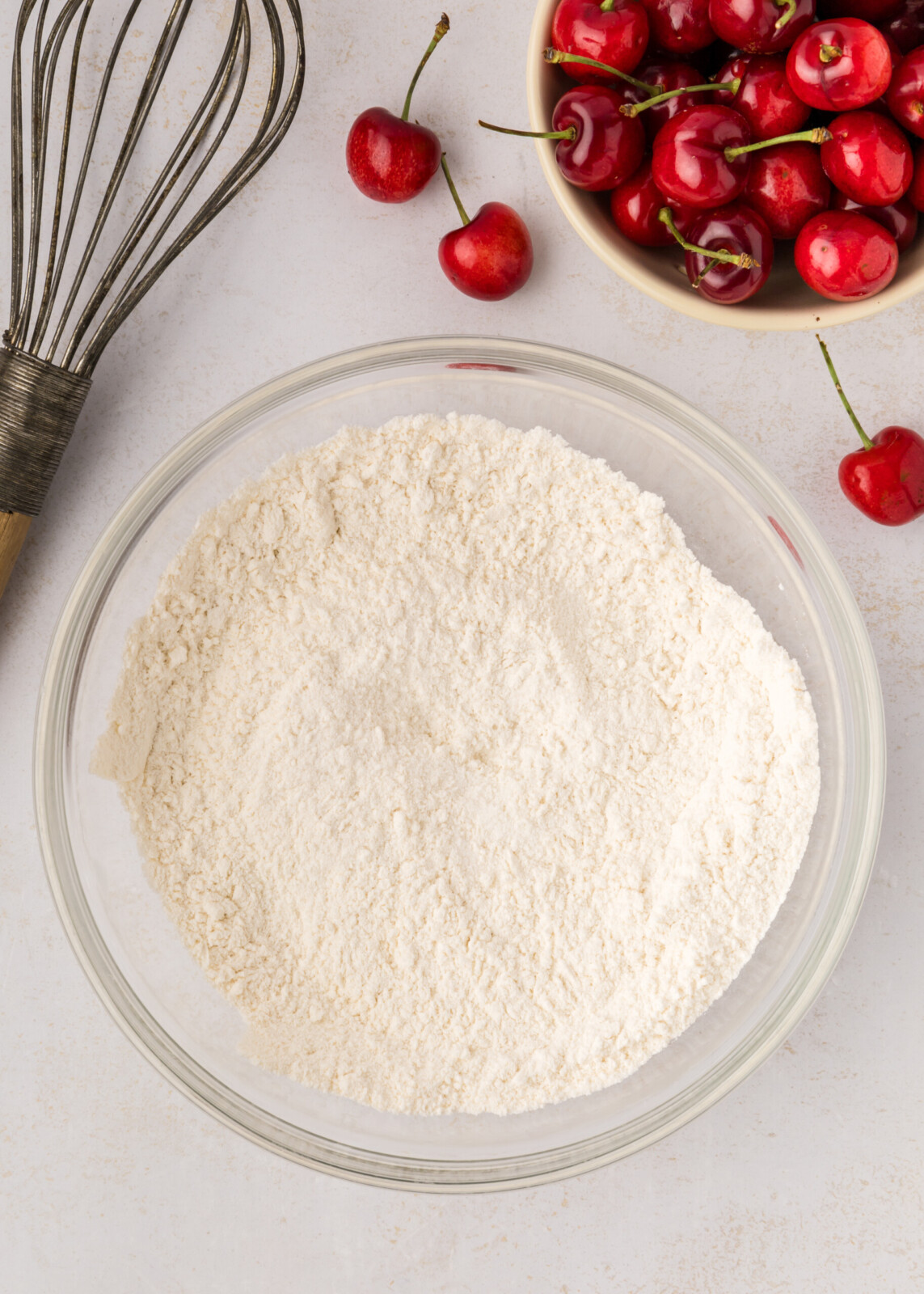If you’ve ever stood in the baking aisle staring at bags of flour wondering what’s the difference between cake flour and all-purpose flour?—you’re not alone! Understanding the different types of flour in baking is truly a game-changer because choosing the right flour for your recipe is one of the most important steps in successful baking. The type of flour you use can dramatically change the texture, structure, and flavor of your baked goods.
Let’s break it all down! Today, I’m sharing everything you need to know about the different types of flour used in baking, why it matters, and how you can make cake flour at home in a pinch.

Flour 101: Understanding the Different Types of Flour for Baking
Why the Type of Flour Matters in Baking
Flour is the foundation of nearly every baked good. It provides structure and affects texture, rise, and even flavor. But not all flours are created equal—and it all comes down to protein content.
Flours with higher protein (like bread flour) create more gluten, which gives you chewy, sturdy textures. Flours with lower protein (like cake flour) yield soft, tender, delicate results. This is why using the right type of flour is key to getting the results you want.All-Purpose Flour: The Reliable Staple
Types of Flour for Baking: Explained
1. All-Purpose Flour
- Protein content: ~10-12%
- Best for: Cookies, muffins, brownies, quick breads, some cakes
- Texture: Balanced—light but with enough structure
All-purpose flour (or AP flour) is your go-to, everyday flour. It’s versatile and works in a wide range of recipes. However, for super soft, delicate cakes, it’s not always the best option.
2. Cake Flour
- Protein content: ~6-8%
- Best for: Cakes, cupcakes, and tender baked goods
- Texture: Extra soft, light, and fluffy
This is my favorite flour for cakes! The low protein content means less gluten development, which gives cakes that signature soft crumb and fluffy texture. It also absorbs liquid and sugar differently than AP flour, helping create a tighter, more even crumb.
💡 Pro tip: Always use cake flour when a recipe calls for it. Substituting AP flour can lead to a denser cake!
3. Bread Flour
- Protein content: ~12-14%
- Best for: Yeast breads, pizza dough, pretzels
- Texture: Chewy and sturdy
Bread flour has the highest protein content of the common flours, which is exactly what you want for chewy, hearty bread with great rise and structure. Not ideal for cakes or cookies.
4. Pastry Flour
- Protein content: ~8-9%
- Best for: Pie crusts, biscuits, scones
- Texture: Tender and flaky
Pastry flour falls between cake flour and all-purpose flour. It’s great for recipes that need tenderness but also a bit of structure—think pie crusts that are soft yet hold their shape.
5. Self-Rising Flour
- Protein content: ~8-9% + leavening agents
- Best for: Biscuits, pancakes, muffins (only if recipe calls for it)
- Texture: Light and airy (thanks to added baking powder)
Self-rising flour has baking powder and salt already mixed in. Only use it if a recipe specifically calls for it—otherwise, it can throw off your measurements and final result.
Can I Substitute Flours in a Recipe?
You can—but you probably shouldn’t unless you really know how each flour behaves. For example, using all-purpose flour instead of cake flour will usually result in a denser, less tender cake. The chemistry of baking is sensitive, so following the recipe as written will give you the best outcome every time.
How to Make Cake Flour at Home
If you’re in the middle of a cake recipe and realize you don’t have cake flour—don’t panic! You can easily make a cake flour substitute using two simple ingredients:
DIY Cake Flour Recipe:
- Measure 1 cup of all-purpose flour.
- Remove 2 tablespoons of the flour.
- Add 2 tablespoons of cornstarch in its place.
- Sift the mixture 2-3 times to fully combine and aerate.
This hack mimics the lower protein and finer texture of real cake flour and works in a pinch. But if you bake cakes often, I highly recommend keeping cake flour stocked in your pantry!
Final Thoughts: Use the Right Flour for the Right Bake
Baking is part art, part science—and flour plays a huge role in both. Whether you’re baking your first cake or your fiftieth, choosing the correct flour is key to getting the texture, rise, and flavor you’re aiming for.
So next time you’re whipping up a recipe, double check the flour it’s calling for. It might seem like a small detail, but it makes a big difference!
What’s your favorite type of flour to bake with? Let us know in the comments below! 🍰🍪✨

